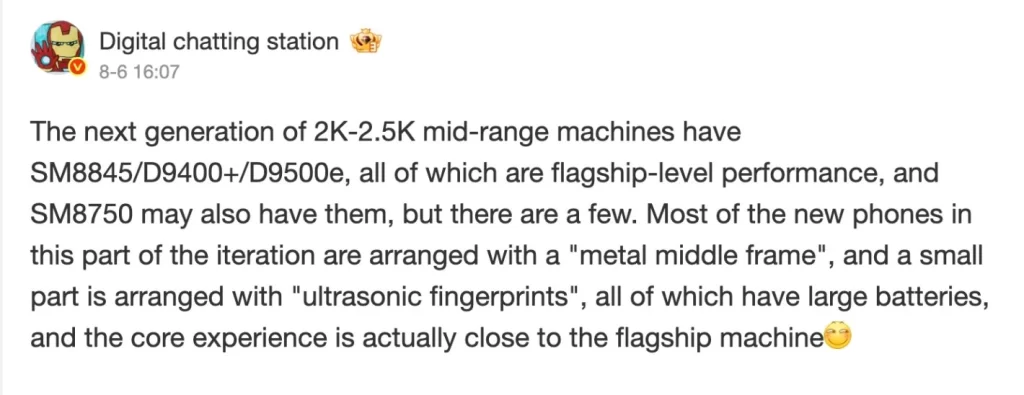Qualcomm is poised to launch the Snapdragon 8 Gen 5 chipset on September 23, 2025, targeting the mid-range smartphone segment while delivering performance close to flagship-level chips. Priced between $280 and $350, the Snapdragon 8 Gen 5 is rumored to share the same custom Oryon CPU cores and 3nm ‘N3P’ manufacturing process as the premium Snapdragon 8 Elite Gen 2, offering a core experience nearly on par with top-tier models but at a significantly more affordable price.

The Snapdragon 8 Gen 5 will essentially be a toned-down version of the Snapdragon 8 Elite Gen 2, aiming to bring flagship-like CPU and GPU performance—including gaming and multitasking capabilities—to a broader consumer base. The Snapdragon 8 Elite Gen 2 stands out with higher clock speeds, better GPU frequencies, improved memory bandwidth, and enhanced AI performance, but the Gen 5 aims to approach this powerful baseline with slightly lower specs to enable cost savings.
In addition to Qualcomm’s offering, MediaTek alternatives such as the Dimensity 9400+ and Dimensity 9500e are expected to compete fiercely in this segment. These chipsets support flagship hardware features such as ultrasonic fingerprint sensors, premium metal body designs, and large batteries employing silicon-carbon technology.
Key aspects of Snapdragon 8 Gen 5 include:
- Launch date: September 23, 2025
- Price range: $280–$350, much lower than Snapdragon 8 Elite Gen 2 phones ($900+)
- Architecture: Custom Oryon CPU cores, aligned with Snapdragon 8 Elite Gen 2 cores
- Manufacturing: Same advanced 3nm N3P process as Snapdragon 8 Elite Gen 2
- Expected performance: Near-flagship experience with slightly toned-down specs
- Competitive alternatives: MediaTek Dimensity 9400+ and 9500e
- Premium features expected in phones using this chip: Ultrasonic fingerprint sensors, metal chassis, silicon-carbon battery tech
This new chipset aims to create a “sub-flagship” tier by blending flagship architecture with mid-range pricing, potentially reshaping the market by making premium performance more accessible.






